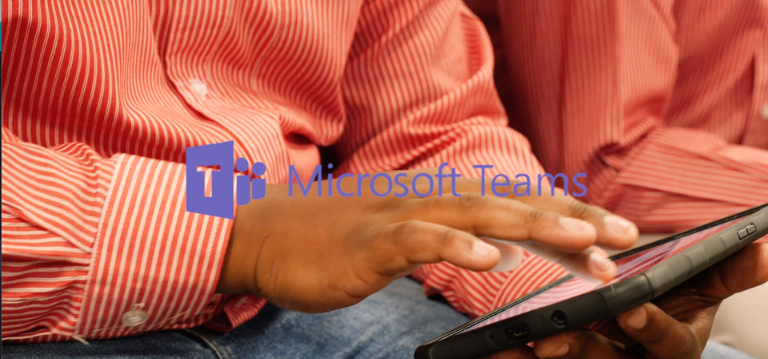Teams is a great collaboration and communication platform from Microsoft. Nashua Communications not only provides Teams services to organisations but we use it in our own offices as well. Our recommendation for Teams comes from our own experiences with the platform. Our own Videsh will take you through how he uses Microsoft Teams and show you why we love Teams so much.
We use Microsoft Teams across devices
The Teams app can be loaded onto any Internet-enabled smart device. Teams is available across mobile, desktop and browser. It can also be integrated with communications and meeting room devices. I personally have Teams installed on my;- laptop
- cell phones (Samsung S8 and iPhone)
- Samsung tablet and
- home computer
When it comes to meetings I enjoy using my Plantronics Voyager, however when I have conference calls that I have to carry out, I prefer my Plantronics Calisto speakerphone.
Here are the premium features we like about Microsoft Teams
Microsoft Teams delivers on four core promises to create a digital workspace for high performing teams.
-
First, Microsoft Teams starts with a chat feature which is fast, fluid, low-overhead, and instantly familiar. It makes it easier to share information and accelerate decision making by providing a modern conversation experience. It supports not only persistent but also threaded chats to keep everyone engaged. Team conversations are open by default, but private discussions can also be had. Microsoft has also enhanced the meeting experience by adding scheduling capabilities, integrating free/busy calendar availability for team members, and making it easier to transition from chat to high-quality voice and video. People can additionally include emoji’s, memes and other fun graphics in their messages, which allows team culture to shine through. Email conversations in Teams are made easier as you can email a channel and retain rich formatting, including attachments and flags, so people can keep all the content and context handy.
-
Second, Microsoft Teams is a true hub for teamwork. The Office apps and services that people use every day – like Word, Excel, PowerPoint, OneNote, SharePoint, Planner, even Power BI - are all built-in, so people have the information and tools they need right within the context of Microsoft Teams.
-
Third, as every group is unique, it is easy for teams to customise their workspace with tabs, connectors and bots. Microsoft Teams shares the same Connector platform with Exchange and has full support for the Microsoft Bot Framework. Bots can be accessed across channels, making it easier to gather information and streamline tasks from within your workflow. Using tabs, each team can customise its environment either with the familiar Microsoft tools like Planner and Visual Studio Team Services or with an ever-growing range of third-party services. To bring users a breadth of customisation options, Microsoft works with more than 150 partners to bring extensibility in the form of bots, extensions and apps to Microsoft Teams.
-
Fourth, Microsoft Teams benefits from the Office 365 hyper-scale, enterprise-grade cloud, delivering the advanced security and compliance capabilities customers expect. It supports key standards such as SOC 1, SOC 2, EU Model Clauses, HIPPA, and more. Since preview, Microsoft has added mobile management with Microsoft Intune and new features for compliance and litigation support, including audit log search, eDiscovery and legal hold for channels, chats and files.
Microsoft Teams really makes our meetings easier
Microsoft Teams offers a complete meeting solution supporting sharing, video and audio conferencing. For me, this transforms an ordinary meeting into a modern meeting in the following ways:
-
Before a meeting: team members can share and review information and conversation history on the subject matter, without having to leave Microsoft Teams.
-
During a meeting: team members can share their desktop, meeting attachments or a PowerPoint deck. The meeting can take place via either audio conferencing or video and can be recorded.
-
After a meeting: team members can review recorded meetings and view previous meeting details in conversation history, giving them complete context.
We use prioritisation and customisation options to manage our notifications
Managing notifications is an important part of managing a good work-life balance. By default, Microsoft enables email notification for chat messages in Teams. This means that an average user is notified about messages received through their email as well as by app banners. I am not a fan of this as it ends up cluttering your inbox with tens to hundreds to thousands of messages and double notifications hence I classify my notifications according to priority and relevance.
At Nashua Communications, we use third-party apps to improve the Teams experience
I use Secretary Bot, it helps me set up meetings easily by checking when the other attendees and I are free. After checking our schedules, it suggests meeting times according to when we are all free. I also have the Who bot installed. The Who bot helps me to find employees through filters such as; station, team, project, or expertise.
Organising groups helps us keep things tidy on Teams
Firstly, my Teams is categorised into ‘Favourite’ and ‘Other’ groups to reduce clutter on important vs information teams; thereafter arranged into Projects, Solution Designs, and Management Communications.
Nashua Communications still kept its landline numbers on Teams, here’s how
We have interoperability between Teams and Skype for Business Online. Currently, we use Skype for Business for Enterprise Voice Communications and Teams for Collaboration however Nashua Communications is transitioning the Enterprise Voice modality into Teams.
Keep in mind that Microsoft is phasing out Skype for Business and transitioning to only using Teams. If you want to know how this move affects you, or better yet how you can transition to Teams, you should talk to us
Technology changes at a rapid pace and it's vital to keep up to date and ensure your communications technology is keeping your organisation up-to-date. The cloud is the future of technology but how ready are you for the change?Take our Tech Audit and find out!
Microsoft Teams features improve our productivity
Teams is the hub for teamwork where people, including outside organisations, can actively connect and collaborate in real time to get things done. I have conversations right where the work is happening, whether co-authoring a document, having a meeting, or working together in other apps and services. I also use Teams to have informal chats, iterate quickly on a project, work with team files, and collaborate on shared deliverables. The ultimate business benefit Teams brings for me is creating a workplace where employees can communicate with each other openly and efficiently and where leadership can engage with employees.
Get hold of us if you would like to know more about Teams and how it can benefit your organisation.





